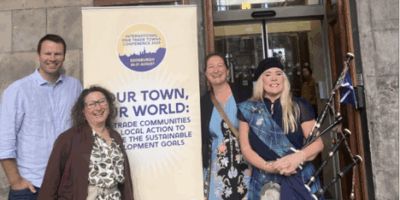News
International report reveals atmospheric impact of Hunga eruption
An international assessment report provides definitive statements on the atmospheric impacts from a huge volcanic eruption in 2022.
Deforestation linked to tropical temperature rises, online map shows
Add summary of article Deforestation is leading to temperature increases of up to 5°C in some tropical regions, according to data revealed in a new interactive map created by researchers/ introduction
Mount Everest record-breaker returns to campus
After conquering Everest for the 19th time, the world’s most successful expedition leader returned to campus to speak about life on top of the world.
Championing women in the energy transition
Recent graduate Jolie Revitt collaborated with Her Retrofit Space, a community platform for professional women and homeowners, on an inspiring workshop about women and home retrofit.
Learning from the Fairtrade Towns movement
Professor Anne Tallontire reflects on the International Fair Trade Towns network, which hosted its annual event in the UK this year.






